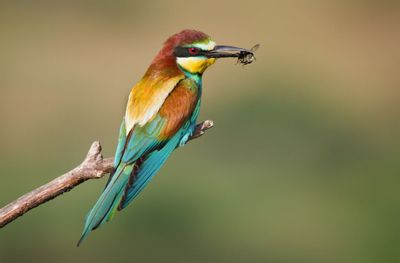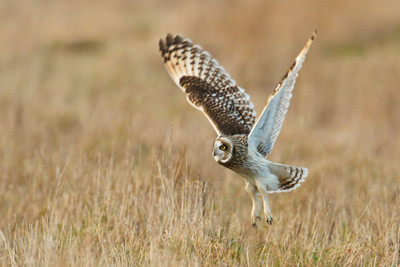White Stork Migration
Best Autumn Migration Tours in 2024/25
 By Dominic Couzens
By Dominic Couzens19th August 2023
Dominic is a Naturetrek tour leader and one of Britain's
best known and most prolific natural history writers.
If ever there was a year to revel in autumn migration, it would have to be this one. For almost all of us, the spring migration could only be enjoyed at home, and while it was delightful and different in its way, the prospect of getting away and seeing a wide variety of birds in the coming months, all in the midst of their migratory journeys, is certainly one to savour. We are offering a truly mouth-watering selection of trips for this Autumn (and next Autumn, should you wish to book ahead!) from several UK-based ‘staycations’ to short-haul ventures to other parts of Europe. The autumn migration is a more leisurely affair than the hurried mass movements of spring, so you can enjoy more than one holiday! Here are some of our favourites.
Our holiday begins with a flight to Batumi, Georgia’s second largest city. From here we will drive the short distance to our comfortable hotel in either Batumi or Chakvi. Batumi sits beneath a migratory bottleneck where, every autumn, vast numbers of raptors are funnelled into a narrow coastal flyway which takes them over the city and the surrounding countryside. The migration reaches a peak in late September when over 100,000 birds of prey can pass through on a single day, along with migrant waders, warblers, flycatchers, pipits and wheatears. Whilst this raptor migration will be the principal focus of our tour, we will also explore several important birdwatching sites nearby in search of such species as Black-winged Pratincole, Broad-billed and Terek Sandpipers, Barred Warbler, Rose-coloured Starling and Red-breasted Flycatcher.
Lesbos, a Greek island just off the coast of Turkey, has for a long time been a spring favourite with birders, drawn to the superb spectacle of migration on this beautiful and unspoilt island, combined with the presence of exciting resident specialities such as Krüper’s Nuthatch, Sombre Tit and Western Rock Nuthatch. Not much changes in the autumn, except perhaps that many of the migrants stay around for longer. This time of the year is particularly good for birds of prey leaving Turkey on their way south to Africa, species such as Short-toed Eagle and Honey Buzzard. We will also check the various marshes for a fantastic range of migrating waders, warblers, herons and wildfowl, as well as the usual Greater Flamingoes at Kalloni Saltpans. Of course, almost anything can turn up here, and every year rarities such as Dalmatian Pelican and Citrine Wagtail grace the island. What will it be this time?
North-eastern Greece lies in the path of the migratory storm of birds making their way between Eastern Europe and Africa. This storm flows over three jewels in the country’s crown, all very special and all very different. Dadia Forest is Europe’s prime breeding site for birds of prey, with 20 species, and in autumn there can be even more to spot over the trees and hillsides! The Evros Delta is a large area of fresh and brackish lagoons, marsh and riverine forest, and should be a paradise for waders, especially those of an eastern provenance such as Marsh Sandpiper, Temminck’s Stint and Broad-billed Sandpiper, as well as many other wetland birds. Finally, freshwater Lake Kerkini holds delights such as White and Dalmatian Pelicans, Pygmy Cormorants and Greater Flamingoes, as well as more forest and scrub species. The birding should be fantastic and there will still be plenty of reptiles and amphibians, butterflies and flowers to keep everybody enthralled.
Look at a map and you notice straight away that Sicily is the perfect stepping-stone between the European mainland and North Africa. This fact hasn’t escaped the birds, either, making Sicily a prime location for experiencing autumn migration. On this relaxing tour, based at a single centre near Siracusa, we hope to encounter a superb variety of migrating raptors, warblers, flycatchers and waders. The Mediterranean scrub should be alive with birds, and the nearby headlands and wetlands will be gloriously unpredictable. Sicily hosts some excellent resident species such as Stone Curlew, Rock Partridge, Slender-billed Gull and Greater Flamingo. We also spend a day visiting 3,900-metre Mount Etna and definitely won’t overlook the superb cultural and culinary attractions.
Azerbaijan is a must-go destination for the keen birder with plenty of exciting, range-restricted, Western Palearctic species. Furthermore, a 90km coastal strip between the Caucasus Mountains and the Caspian Sea, known internationally as the Beshbarmag bottleneck, offers one of Eurasia’s finest migration spots, where tens of thousands of birds (of often over 60 different species) pass through in a single day. Indeed, last year's totals for mid-October ranged from 21,625 – 80,534 individual birds per day! Nestled between eastern Europe and western Asia, Azerbaijan's diverse array of ecosystems support a superb suite of wildlife. From soaring mountain ranges to lush forests, and from arid deserts to pristine coastal areas, Azerbaijan's national parks provide a haven for both native and migratory species. On this holiday we'll join an expert local ornithologist on a tour full of abundant natural history and breathtaking scenery.
Estonia has become a firm favourite among discerning birders in recent years, not least for its unspoilt wetlands, forests and coastal habitats. It is, still, an up and coming destination, with opportunities to find new and exciting birds and locations. Lying along the shores of the eastern Baltic, it sits on the path of migration streaming down from the Arctic and Finland, potentially producing some incredible sightings of such birds as seaducks, divers, cranes and geese, sometimes in their thousands. Several Estonian land-spits and islands are as magnetic for migrants and rarities as the best British hotspots. Inland, the endless unspoilt forests are showing autumn colour and host some great birds of their own, such as owls, woodpeckers and raptors. It makes for a potent mix.
Norfolk is undoubtedly one of the best counties in the UK for autumn migration, not just for the mouth-watering variety of birds it can throw up, but also for the spectacular sights of big flocks of waders and geese. We will visit the famous wader roost at Snettisham on a spring tide, which in the right conditions is one of the great experiences of British birding. The Norfolk coast is studded with world-class nature reserves and a bustling community of birders, meaning that most rarities that turn up manage to get spotted somewhere. We will enjoy the famous footpath at Titchwell, which can provide almost 100 species within a few hundred metres, and also visit scrubby hotspots such as Holme and Wells, where uncommon migrants such as Yellow-browed Warblers and Wrynecks often lurk among the hubbub of commoner migrants. The rich pickings all around should provide a memorable couple of days.
If you had to concoct a recipe for the perfect country to observe autumn migration, it could just be Latvia. Lying to the south of Estonia, it too lies in the path of millions of migrants streaming south from the Arctic to winter further south. The coastline throws up wonderful conditions to tap into this flood. Cape Kolka lies at the tip of the shortest route across the Gulf of Riga, a place where tired or weather-stressed migrants make grateful landfall. Meanwhile, further south, migrants are also funnelled along a narrow strip of coastline seaward of a huge lagoon, and this is where Papa, Latvia’s premier migration hotspot, lies. On this exciting tour we should see hundreds of ducks, waders, raptors, cranes and passerines, with more than the odd rarity, such as Pallid Harrier or White-billed Diver, among them. We also make a short detour inland in search of forest owls and woodpeckers.
In recent years, the Yorkshire coast has come to rival the Isles of Scilly and Shetland for the title of most exciting place to watch migratory birds in the UK. On a good day, Spurn is simply incredible for the numbers and variety of species and rarities. We visit at a plum time, and our activities will include a ringing session with the Spurn wardens and the opening of a moth-trap in our hotel grounds, both of which could reveal major surprises. The visible migration can also be sensational at this time of year, with potentially thousands of finches, thrushes, pipits and other birds flying over our heads. We also take a private trip in a four-wheel all-terrain Unimog vehicle to get to Spurn Point and its lighthouse. As if this wasn’t enough, we also visit famous Bempton Cliffs and Flamborough Head, where there will still be many seabirds around, including divers, shearwaters, auks and skuas. Birds such as Lapland Bunting and Black Redstart could also be on the ground here.
The coast of Dorset, with its magnificent, varied scenery, often marks the last port of call for southbound migrants heading for warmer climates than the UK can offer, and October is one of the best months to see them. Portland Bill, sticking out into the English Channel, funnels migrants into a very small area and can be alive with birds on any autumn day, attracting many rarities. Durlston Head and St Aldhem’s are also excellent migrant traps, and at the former we will attend both a bird ringing session and opening of moth-traps; almost anything can turn up. These sites, together with Poole Harbour and the Weymouth reserves of Lodmoor and Radipole ensure a superb variety of birds, including Spoonbill, Avocet, Bearded Tit, Guillemot, Gannet, Marsh Harrier and various warblers, thrushes and finches. There is something for everybody in this mild part of the world.
Southern Portugal packs a lot of birding into a small area. Journeys are short and the landscape changes quickly, so you can be birding on sun-baked saltpans one day, or on top of towering sea cliffs the next and on rolling inland plains the next. It isn’t Spain-like, either, for Portugal has a definite feel and culture quite different from its larger neighbour. The superb coastal wetlands around the Rio Formosa should be replete with waders in September, plus Greater Flamingoes, Black-winged Stilts, Glossy Ibises and much more. The plains of Alentejo have Great and Little Bustards, Iberian Magpies, Calandra Larks and a fabulous range of raptors, including Spanish Imperial Eagle. Down in the south-west near Cape St Vincent, we should see Egyptian Vultures and Short-toed Eagles on their southbound migration. We will take a pelagic trip out here, too, with a chance of Great and Cory’s Shearwaters, European and Wilson’s Storm-petrels.
Menorca is the second largest of the Balearic Islands and is a UNESCO Biosphere Reserve. Our holiday is timed to coincide with peak autumn bird migration and thousands of species will either be resting on the island en route south, or arriving to spend the winter. We will be based for the week in a beautifully restored 18th century Menorcan farmhouse set in 10 hectares of countryside. From here we will explore the island’s stretches of coast, woodland and wetlands by gentle daily walks in search of Menorca’s special birds, flowers and culture.
The Strait of Gibraltar is just 14 km wide, providing a host of migrating birds with an ideal point to cross the Mediterranean, while ‘the Rock’ itself acts as a welcome staging post. We’ll arrive during the peak of the autumn migration and make short excursions each day to scan the skies for raptors and other migrating birds by means of gentle walks or sitting in the sun! We’ll also head out to sea on one or more mornings to look for whales and dolphins in the Strait of Gibraltar by boat. We’ll be based for all four nights near the small characterful town of Tarifa, an ideal location from which to view the bird migration.



 Loading search...
Loading search...













